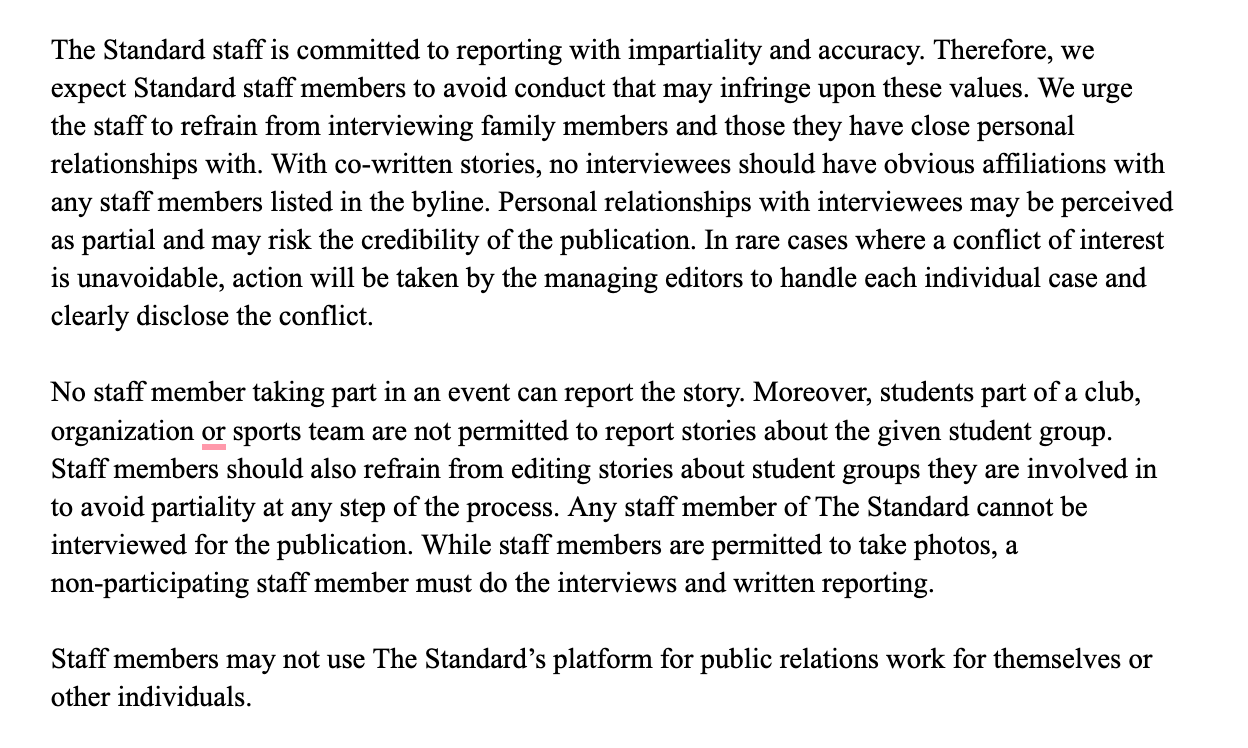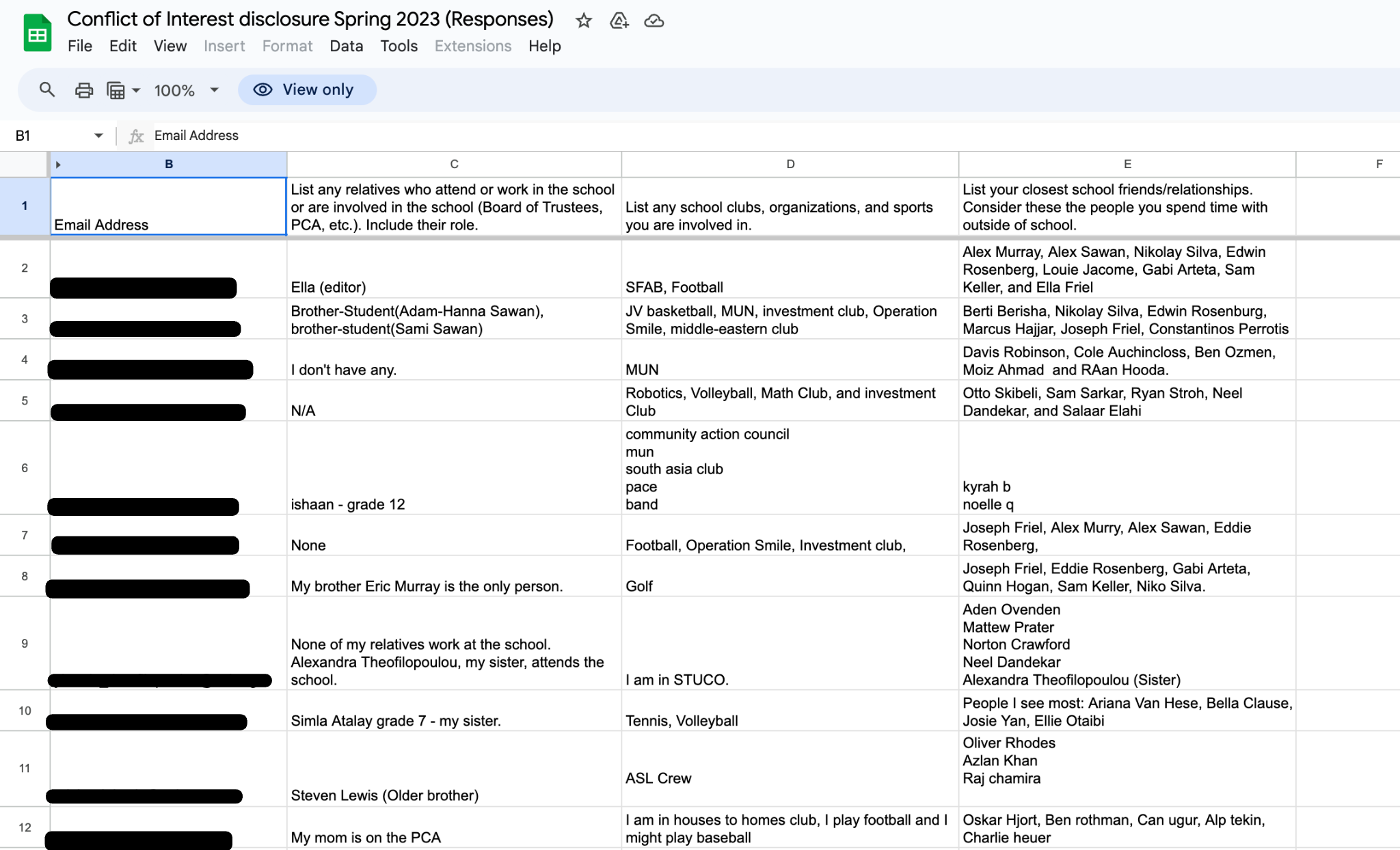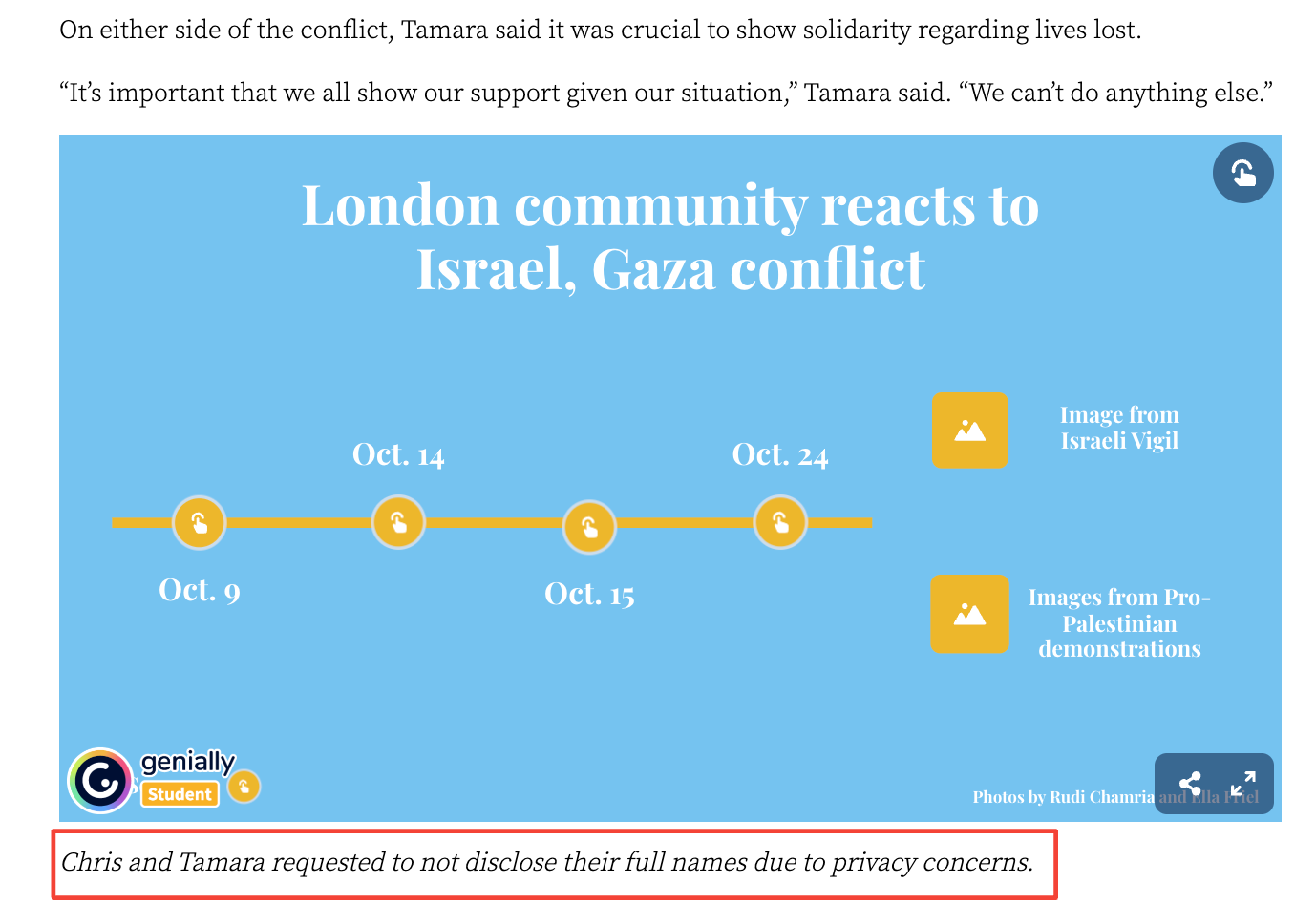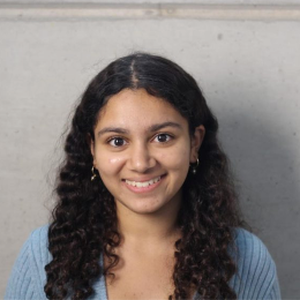Law, Ethics and News Literacy
A publication can not truly be effective until its staff members understand the ethical implications of being a journalist. I make sure to abide by our publication's code of ethics to maintain the credibility of the paper, and with the knowledge I've gained over the last four years, I can encourage and help students refrain from infringing upon journalistic procedures.

Conflict of Interest Policy
Over Winter Break, I wrote The Standard's much overdue conflict of interest policy. In a school with barely over 500 students and over 70 members on staff, it can be difficult for new reporters to wrap their heads around appropriate interviewees. Having a distinct conflict of interest policy increases the credibility of our publication. I researched and took inspiration from policies that the Associated Press and the New York Times use.
In addition to the official policy on our site, all staff members are required to disclose people they are close to and student groups they affiliate with, in a Google Form. This adds a layer of accountability after our reporters have signed the policy.

Disclosing anonymity
In stories with sensitive topics, we allow our sources to remain anonymous, if disclosing their name can pose an obvious threat to their safety. I added this disclosure to a piece about eating disorders written by one of the editors and to my own piece where I interviewed protestors at Palestinian demonstrations in London.

AI Statement
The managing team came together to craft a statement with our expectations regarding the use of artificial intelligence in reporting and writing. In an age where it is difficult to detect plagiarism and use of artificial intelligence, we wanted to make sure our staff is committed to continuing our unique, distinct reporting.
A few weeks ago, an opinions editor approached me after she detected there may be use of artificial intelligence while looking through the version history and seeing a lack of source attribution. I spoke to my adviser, so we could confront the reporter, who ultimately provided sourcing. Detecting and responding to artificial intelligence is one way we seek to continue creating strong student-driven journalism.
Making corrections
In our third issue last year, I wrote a piece with another editor in which we both conducted interviews. When writing the article we incorrectly attributed the wrong title to our authority source, however, we only found out once we had sent our paper to the press. I wanted to make sure I made the proper changes and informed readers about the mistake before they read the story.


Informing budding publications
We came into contact with journalists at a local school named St. Augustine's Priory last year. With a budding journalism program, they were keen on understanding how we run an effective newsroom. They visited us in mid-November for a day filled with workshop activities. Through our engagement we can help these student journalists understand journalistic protocol.

Reporting at protests
When I covered local protests in response to the Israeli-Palestinian conflict, I went in thinking about the framework and guidelines our adviser provided. Keeping safety in mind and my stance as a journalist, I worked to remain objective and impartial on the ground and in my writing, too.



